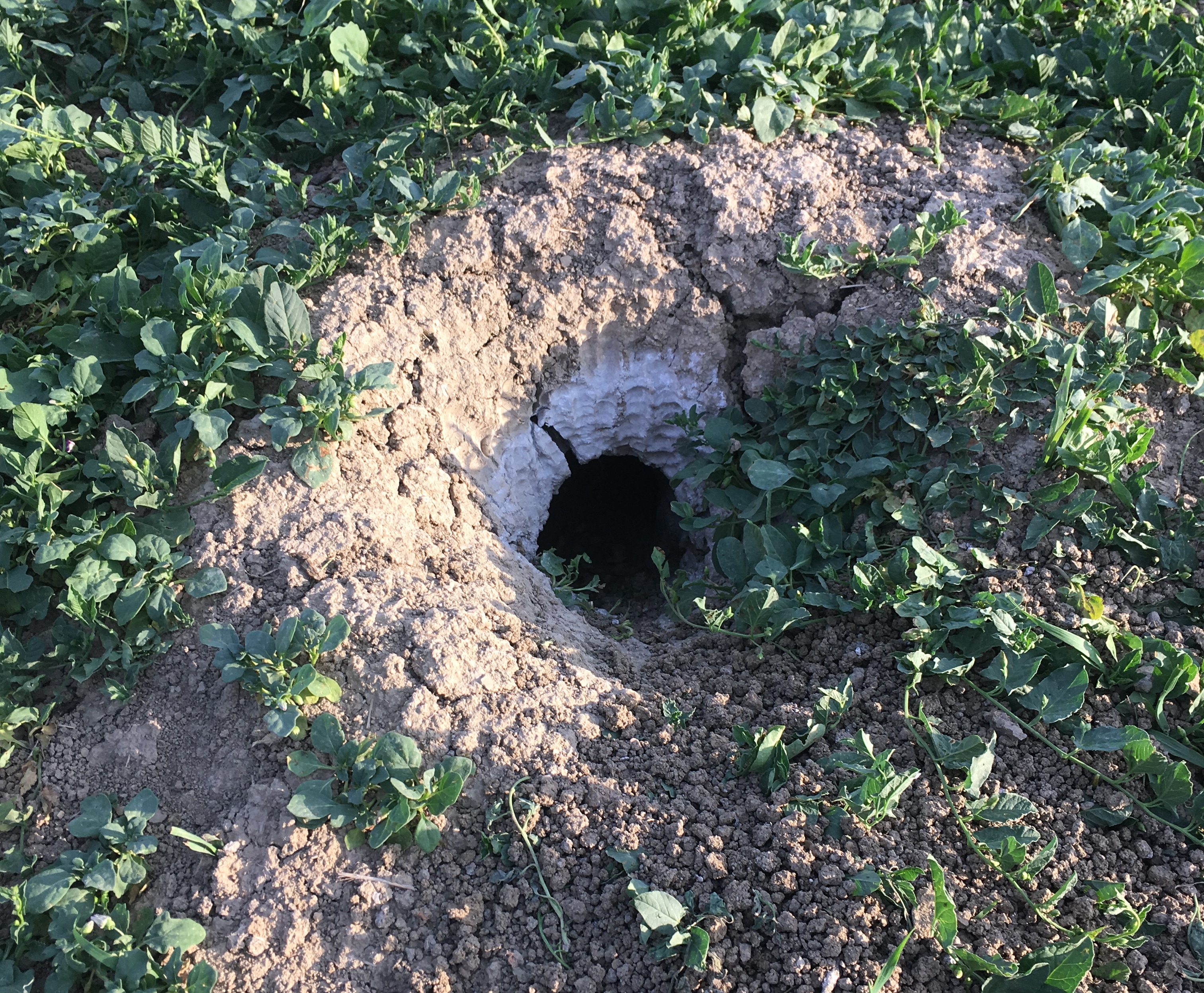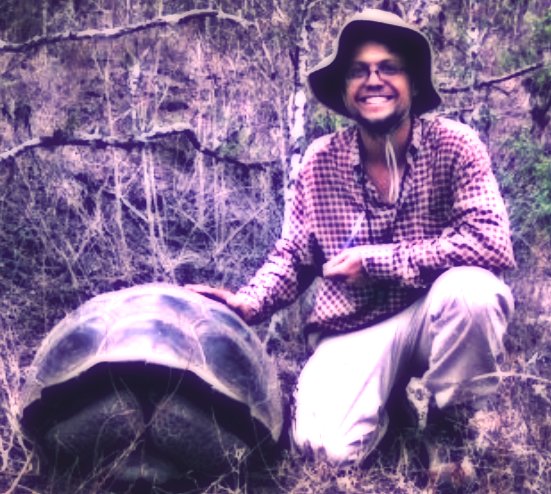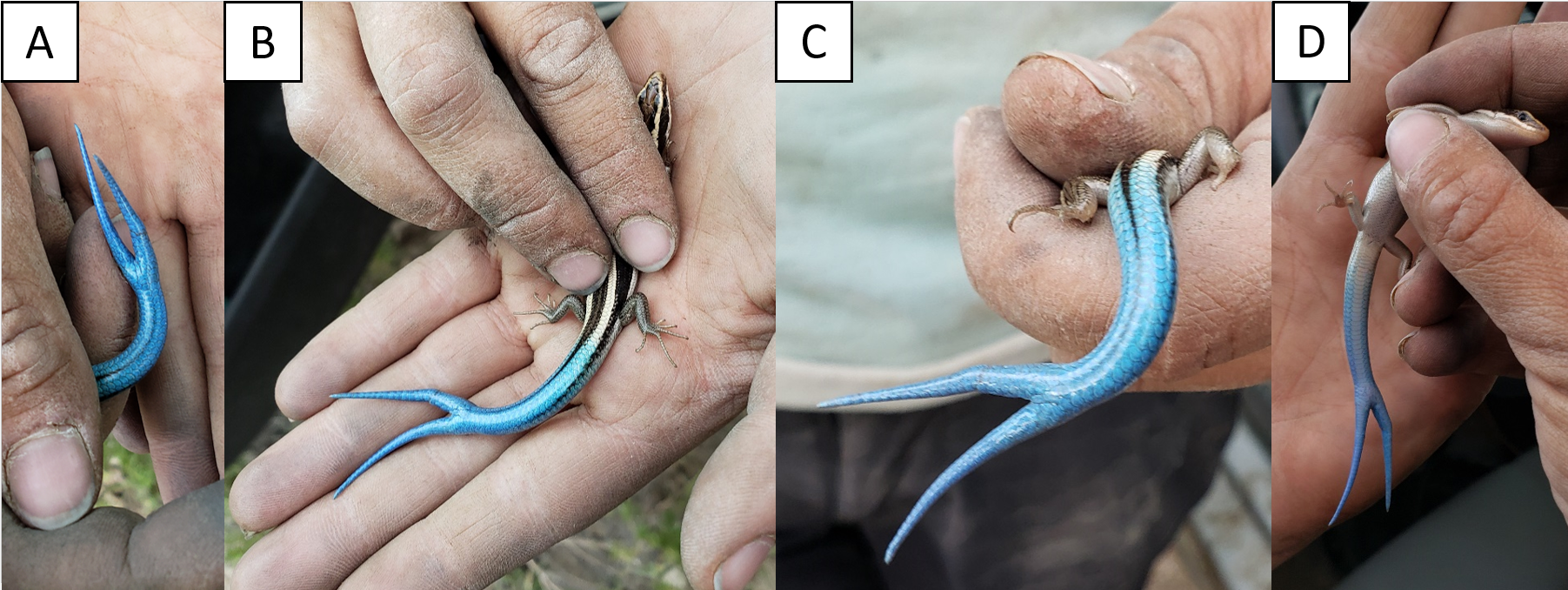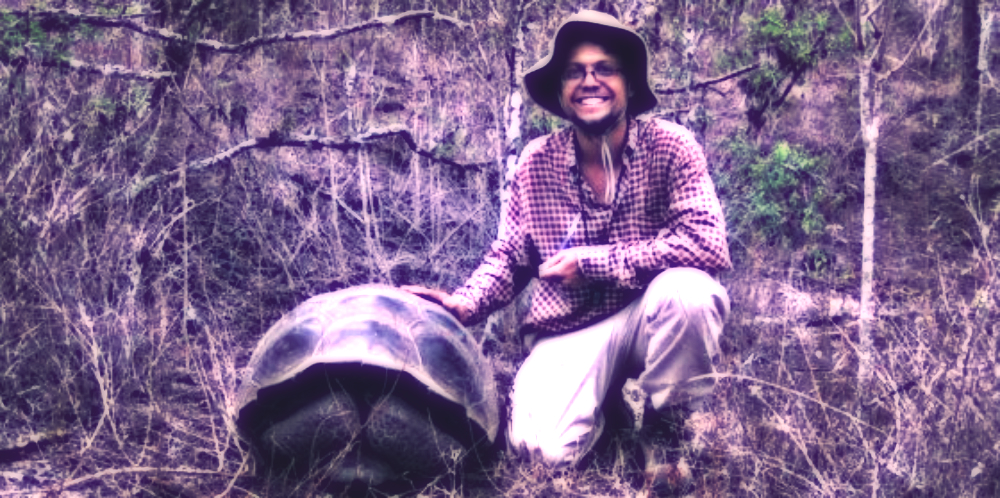
Several published studies have already shown that temperature, precipitation and topography can affect the probability of a die-off event. However, a broader synthesis of datasets from across the BTPD range may enable more accurate prediction of when and where die-offs will occur. The APE lab is leading a large collaborative project to create predictive models of BTPD colony die-offs caused by the plague bacterium. We have acquired colony history data from across the BTPD range and are working on using machine learning techniques to create a model of plague outbreaks that can help managers determine how best to target their anti-plague management activities (such as “dusting” for fleas and vaccine administration). This model will also help us better understand the selection pressures that could lead to genetic resistance to plague.
 A BTPD burrow that has been “dusted” with insecticide to reduce the probability of plague transmission through fleas.
A BTPD burrow that has been “dusted” with insecticide to reduce the probability of plague transmission through fleas.
In 2020, our team received USDA/NIFA funding to build a more detailed model of boom-bust population dynamics in prairie dog metapopulations as part of a larger project focused on rangeland management:
“Understanding how to manage prairie dog population dynamics in the context of plague, climate, and livestock production”. USDA-AFRI. 2020-2023. $496,000 (PI: A.D. Davidson, Colorado State University)
Collaborators: * Ana Davidson, Colorado State University * Elizabeth Hunter, GSU * David Eads, Colorado State University







Share this post
Twitter
Google+
Facebook
Reddit
LinkedIn
StumbleUpon
Pinterest
Email